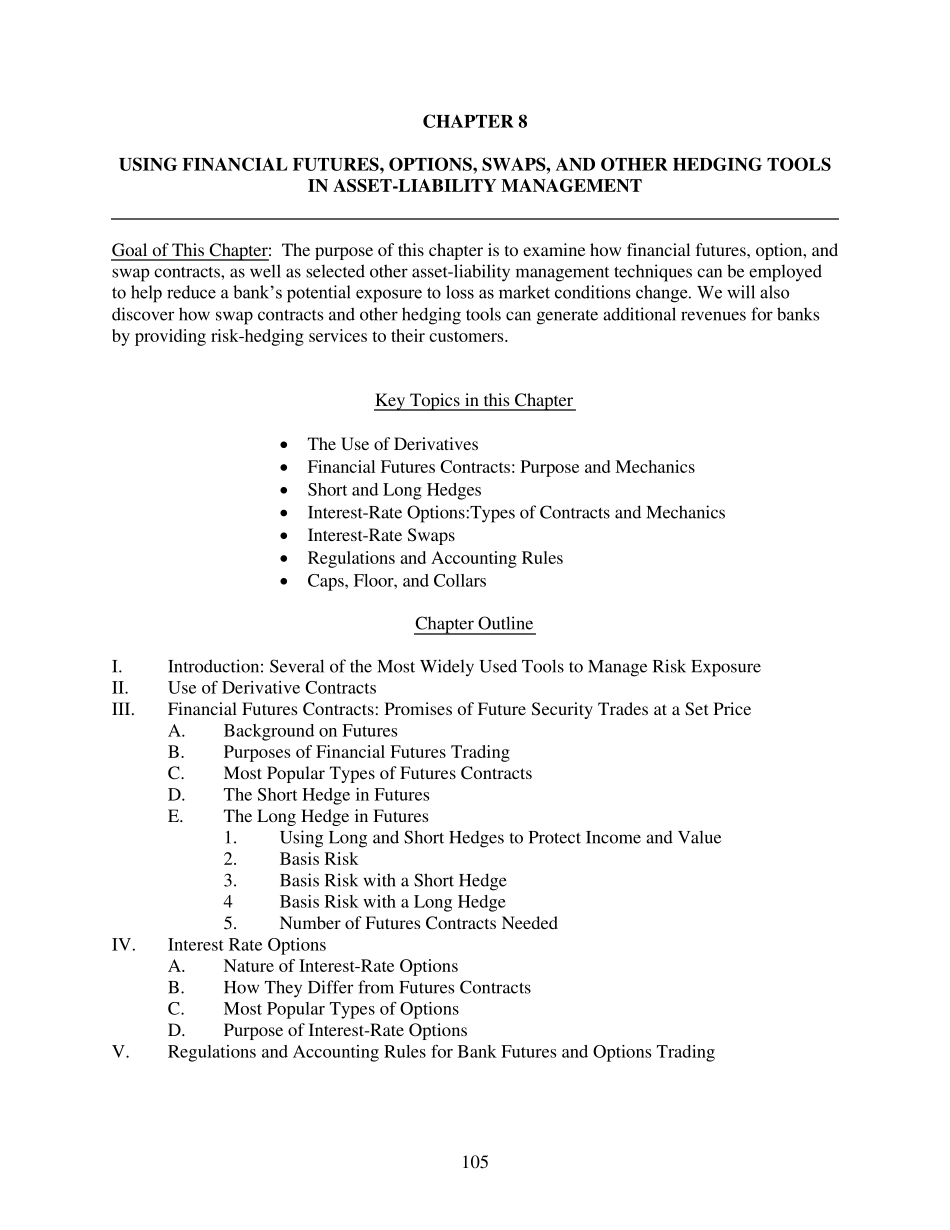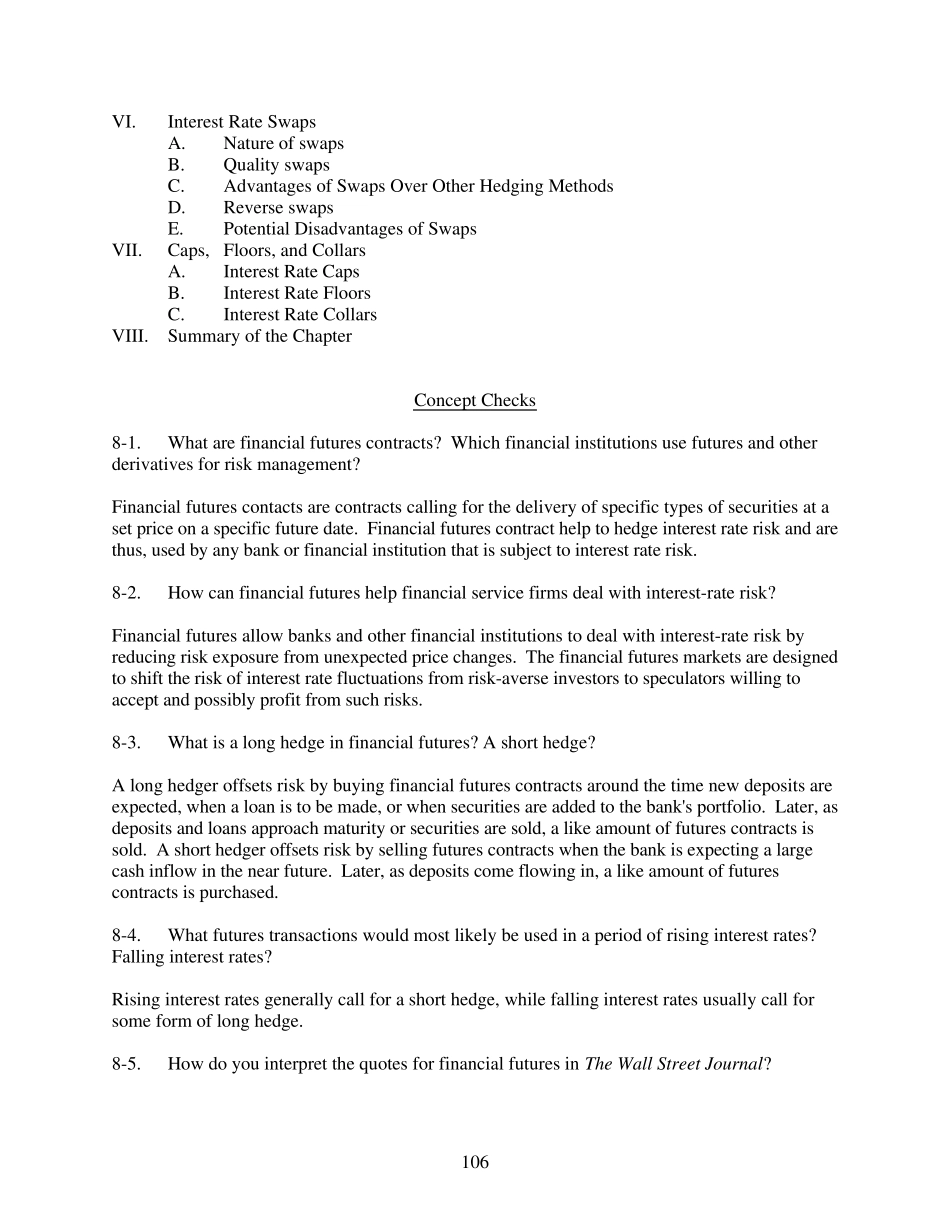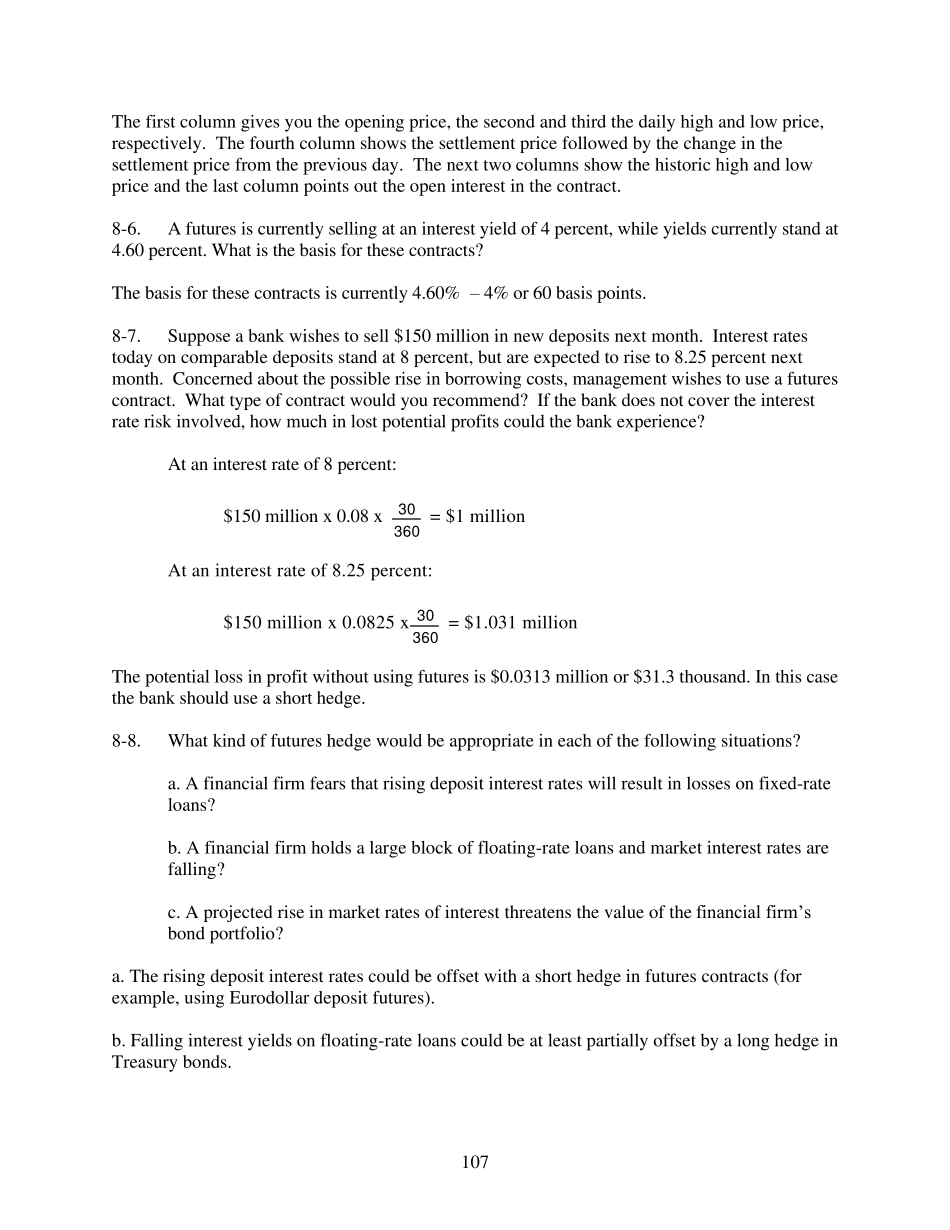105 CHAPTER 8 USING FINANCIAL FUTURES, OPTIONS, SWAPS, AND OTHER HEDGING TOOLS IN ASSET-LIABILITY MANAGEMENT Goal of This Chapter: The purpose of this chapter is to examine how financial futures, option, and swap contracts, as well as selected other asset-liability management techniques can be employed to help reduce a bank’s potential exposure to loss as market conditions change. We will also discover how swap contracts and other hedging tools can generate additional revenues for banks by providing risk-hedging services to their customers. Key Topics in this Chapter • The Use of Derivatives • Financial Futures Contracts: Purpose and Mechanics • Short and Long Hedges • Interest-Rate Options:Types of Contracts and Mechanics • Interest-Rate Swaps • Regulations and Accounting Rules • Caps, Floor, and Collars Chapter Outline I. Introduction: Several of the Most Widely Used Tools to Manage Risk Exposure II. Use of Derivative Contracts III. Financial Futures Contracts: Promises of Future Security Trades at a Set Price A. Background on Futures B. Purposes of Financial Futures Trading C. Most Popular Types of Futures Contracts D. The Short Hedge in Futures E. The Long Hedge in Futures 1. Using Long and Short Hedges to Protect Income and Value 2. Basis Risk 3. Basis Risk with a Short Hedge 4 Basis Risk with a Long Hedge 5. Number of Futures Contracts Needed IV. Interest Rate Options A. Nature of Interest-Rate Options B. How They Differ from Futures Contracts C. Most Popular Types of Options D. Purpose of Interest-Rate Options V. Regulations and Accounting Rules for Bank Futures and Options Trading 106 VI. Interest Rate Swaps A. Nature of swaps B. Quality swaps C. Advantages of Swaps Over Other...


